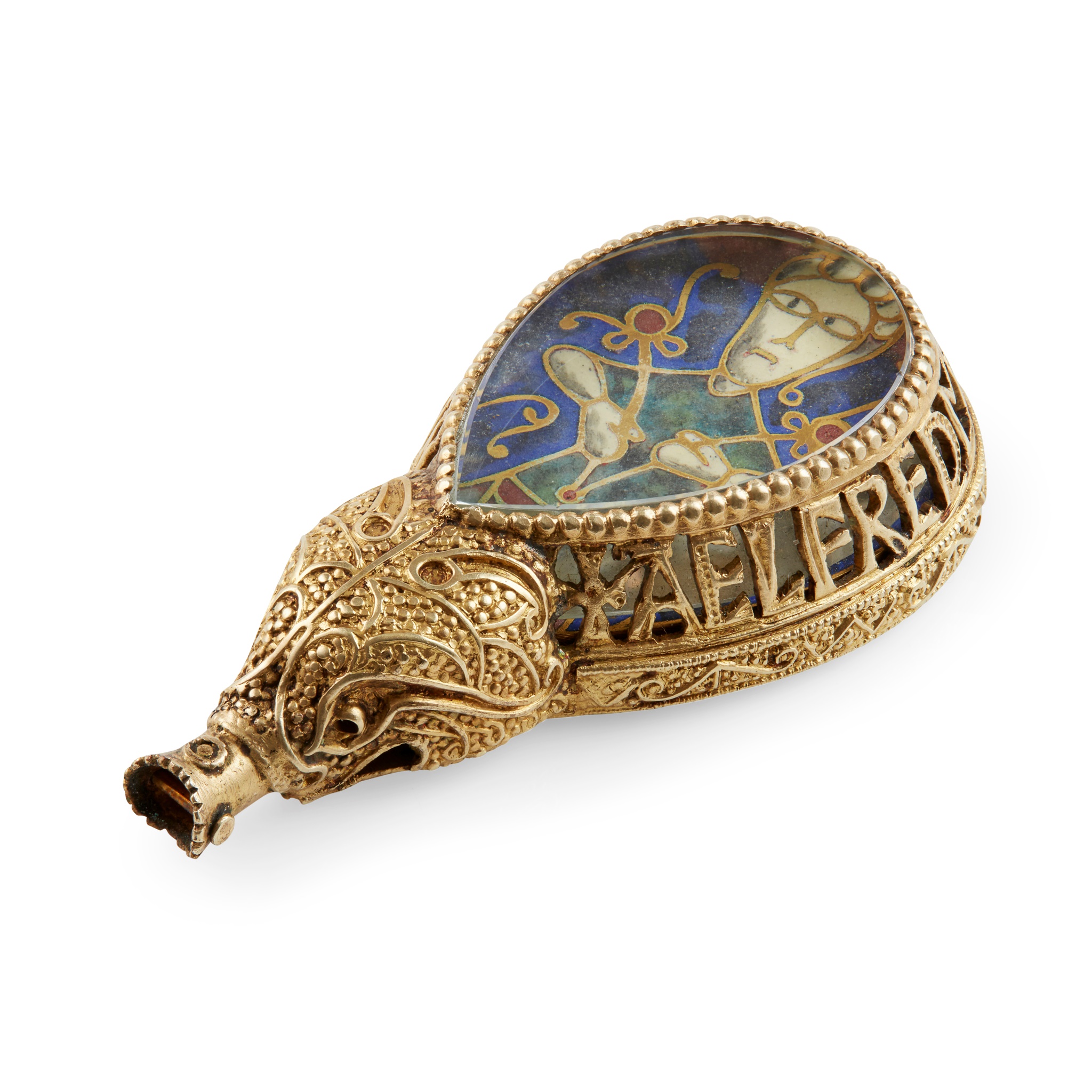A copy of the Alfred Jewel
£875
Auction: 10 March 2020 at 10:00 GMT
Description
unmarked, modern, gilt metal and coloured panel with gilding under glazed cover
Dimensions
Overall length: 60mm
Footnote
The original jewel is formed of a rock crystal tear drop and micro mosaic miniature also has the inscription AELFRED MEC HEHT GEWYRCAN translated as 'Alfred ordered me to be made’. Alfred refers to the King of Wessex from 871-899, he is most famous for unifying the South of England in the 9th century and fending off Viking invasions. Around 880 a peace treaty was agreed with Guthrum, leader of Danes who had settled in East Anglia.
Alfred is also renowned for the revival of Old English and it is for this reason that the jewel is believed to have been a pointer to help read books. However there are several other theories, in order to keep the mystery of the Middle Ages alive, including older sources which suggest it was designed as decoration for a staff for battle.
The jewel was discovered in 1693 by Sir Thomas Wroth on his Petherton Park estate in an area known as Parker's Field. Petherton Park was the stronghold in the marshes from which Alfred launched his counter-attack on the Great Army of the Vikings. This ultimately led to his crucial military victory at Edington in 878 and the expansion of his authority across the southern half of England. Latterly a monastery was founded on the site, Athelney Abbey, which would help the literary argument as to the purpose of the jewel and perhaps the argument that it was made slightly later. When the jewel passed to Colonel Nathaniel Palmer of Stogursey, he bequeathed it to the Bodleian library and subsequently became part of the Ashmolean Museums collection, where it can be found today.

